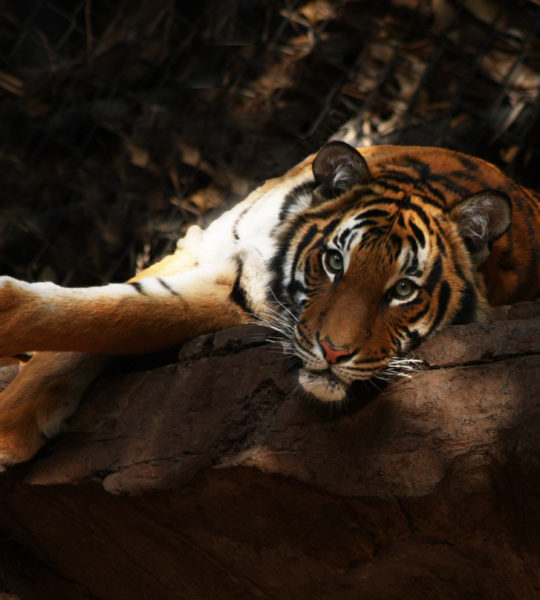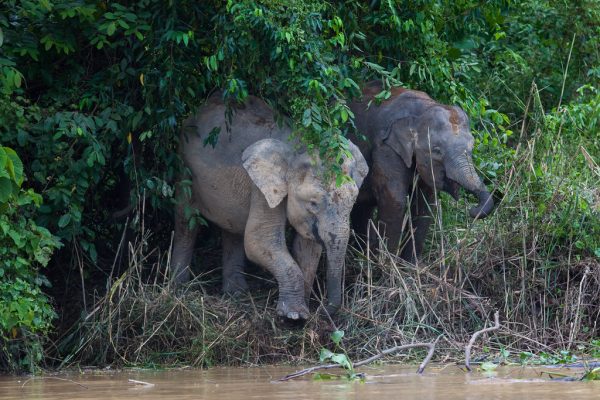
KEY FACTS Population Trend: Decreasing ↓
IUCN Status: Critically Endangered
around 80-120 mature individuals left in the wild
Scientific name: Panthera tigris jacksoni / Panthera tigris malayensis
Size: 2.3 – 2.6m
Found in: Peninsular Malaysia
Habitat: Tropical and subtropical forest, shrubland, grassland
Diet: Wild boar, deer, bearded pigs, sun bear, young elephant calf
Litter size: 2-5 cubs
Average Life-expectancy in the wild: up to 20 years
READ MORE ABOUT SAVING THE MALAYAN TIGER TIGER
An opinion piece by Barbara de Waard, the Founder of Malaysian Wildlife
Malaysia must show leadership in wildlife rehabilitation to save the Malayan Tiger and other threatened species

DESCRIPTION
The Malayan tiger is one of the smallest tiger species found throughout the southern and central parts of the Malay Peninsula and the southern parts of Thailand. It is the national symbol of Malaysia. In fact, it was only recognised as a tiger subspecies in 2004. In the past, the Malayan tiger and Indochinese tiger were thought to be the same. The body of this species is orange-coloured with thin black stripes that perfectly conceal its motive in the background when stalking prey or retreating into seclusion and safety.
Like all tiger species, the Malayan tiger is a solitary animal, although they can be seen in numbers during the mating period (November – March) when females go into heat. During this period, females usually leave their scents to communicate their availability to potential mates. In contrast, the males use scent to mark their territory. Additionally, they can also communicate using different vocalizations—chuffs, moans, growls, and roars.
With only a few hundred Malayan tigers in the wild, Malaysia is on the brink of losing its only tiger species. And the world is closer to losing another of its tiger subspecies. To date, 3 tiger subspecies have gone extinct: the Bali tiger, the Caspian tiger, and the Javan tiger. Habitat loss and fragmentation are leading causes that can bring prey shortages, resulting in the decline in tiger numbers in the wild. Tigers typically have a larger home range, but with the current rate of deforestation and urbanisation, they are being forced to retreat into fragmented patches of forest. Perhaps it is not surprising that human-tiger conflict has risen dramatically in the past couple of years. Other threats to the surviving Malayan tiger population include illegal poaching and hunting for its body parts.
Additionally, learn about the Malayan tigers’ chances of survival, the threats posed by illegal wildlife trade, and how endangered Malaysia’s wildlife is overall.





